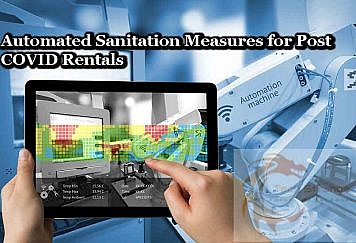In any factory or production company, the goal is always to produce the most with the least input. This is where production line optimization comes in. You can lay the foundations for a more efficient and effective manufacturing process by making small changes and adjustments to your production line. Here are a few tips on how to do just that.
Conduct a Time Study
A time study analyzes the work on a production line to determine how long each task takes. This information can then be used to optimize the line and improve efficiency. Conducting a time study is not as difficult as it may sound, but there are a few things you will need to keep in mind to get accurate results.
- Choose a representative sample of tasks to time. This could be all of the tasks on the production line or a selection of tasks representative of all the different types of work being done.
- Break down each task into its component parts. For example, if you are timing the assembly of a car, you will need to break down the task into each individual step involved in assembling the car.
- Determine the necessary equipment and materials for each task. This will ensure that you have everything you need on hand when it comes time to conduct the time study.
- Time each task from start to finish, including set-up and clean-up time. Be sure to start the timer as soon as the task begins and stop it as soon as it is completed.
- Record your results so that you can refer back to them later. You may want to create a spreadsheet with all the information for each task, including the total time it took to complete the task, any comments or observations, and suggestions for improvement.
- Cover shifts and different worker types if necessary. In some cases, it may be required to conduct separate time studies for different shifts or worker types to get an accurate picture of how long each task takes.
- Analyze your results and look for areas where improvements can be made. Once you have all of your data collected, it is time to start looking for ways to optimize the production process and save time.
- Implement your improvements and re-conduct your time study after some time to see how much time you have saved. Regular time studies are an excellent way to track your progress and ensure that your production line runs as efficiently as possible.
Make Use of Lean Manufacturing Principles
In today’s rapidly changing business environment, it’s more important than ever to be as efficient and cost-effective as possible. That’s where lean manufacturing principles come in. Lean manufacturing creates more customer value while eliminating waste and reducing costs.
Continuous Flow
The continuous flow principle keeps the production line moving at all times. This means eliminating stoppages and disruptions that can lead to lost time and money. Implementing continuous flow can be challenging, but the benefits are well worth it. Some of the ways you can keep the production line moving continuously include:
- Automation: Automating specific tasks can help eliminate disruptions and keep the production line moving.
- Cross-Training Employees: Cross-training employees on different tasks can help ensure that there is always someone available to keep the production line moving in case of absences or unexpected delays.
- Standardized Work Processes: Having standardized work processes in place helps eliminate confusion and ensures that everyone knows what needs to be done and when it needs to be done.
You can keep your production line running smoothly and efficiently by implementing continuous flow. This, in turn, will help you save time and money while providing a better product or service for your customers.
Single-Piece Flow
Single-piece flow takes the continuous flow principle further by focusing on producing one product at a time rather than in batches. This allows you to eliminate waste and further streamline your production process. Some of the benefits of single-piece flow include the following:
- Increased Quality Control: When each product is produced one at a time, it’s easier to catch errors and defects before they become costly problems.
- Reduced Lead Times: Producing products one at a time rather than in batches minimizes the time it takes from start to finish, which benefits you and your customers.
- Lower Inventory Levels: Single-piece flow helps reduce inventory levels because finished products don’t have to be stored until an entire batch is complete.
Single-piece flow is worth considering if you’re looking for ways to streamline your production process further.
Automate Where Possible
One of the best ways to optimize your production line is by automating as much of the process as possible. Tasks that are repetitive and require little human intervention are prime candidates for automation. Not only does this free up your workers to focus on more value-added tasks, but it also helps reduce errors and improve consistency.
When it comes to optimizing your production line, many different technologies and production line balancing solutions are available on the market, so be sure to do your research before investing in any one particular solution.
Types of Automation Solutions
There are a variety of automation solutions available on the market, each with its own set of advantages and disadvantages. Some of the most common types of automation technologies include:
- Assembly Lines: Assembly lines are perhaps the most classic form of automation. In an assembly line, each worker is responsible for completing one specific task in the production process. This type of automation is highly efficient but can be inflexible if your product requires a lot of customization or variation.
- Robots: Robots are increasingly being used in manufacturing and production settings. Weighing the cost of purchasing and maintaining a robotic arm against hiring additional workers is crucial when deciding whether to automate with robots.
- Augmented Reality & Virtual Reality: These cutting-edge technologies are beginning to find applications in manufacturing and other industrial settings. AR/VR can train new employees or teach them how to operate new machines.
Picking the Right Solution for Your Business
There is no one-size-fits-all solution when it comes to automating your production line. The best automation technology for your business will depend on the type of product you manufacture, your budget, and your company’s overall goals.
Be sure to consult with experts and do your research before making any decisions about automating your production process.
Conclusion
These are just a few tips on optimizing your production line for efficiency. Remember that even minor improvements can significantly impact down the line, so don’t be afraid to experiment until you find what works best for your business. With a little trial and error, you’ll be well on your way to having a more efficient and effective production line in no time!
Follow TechStrange for more!





